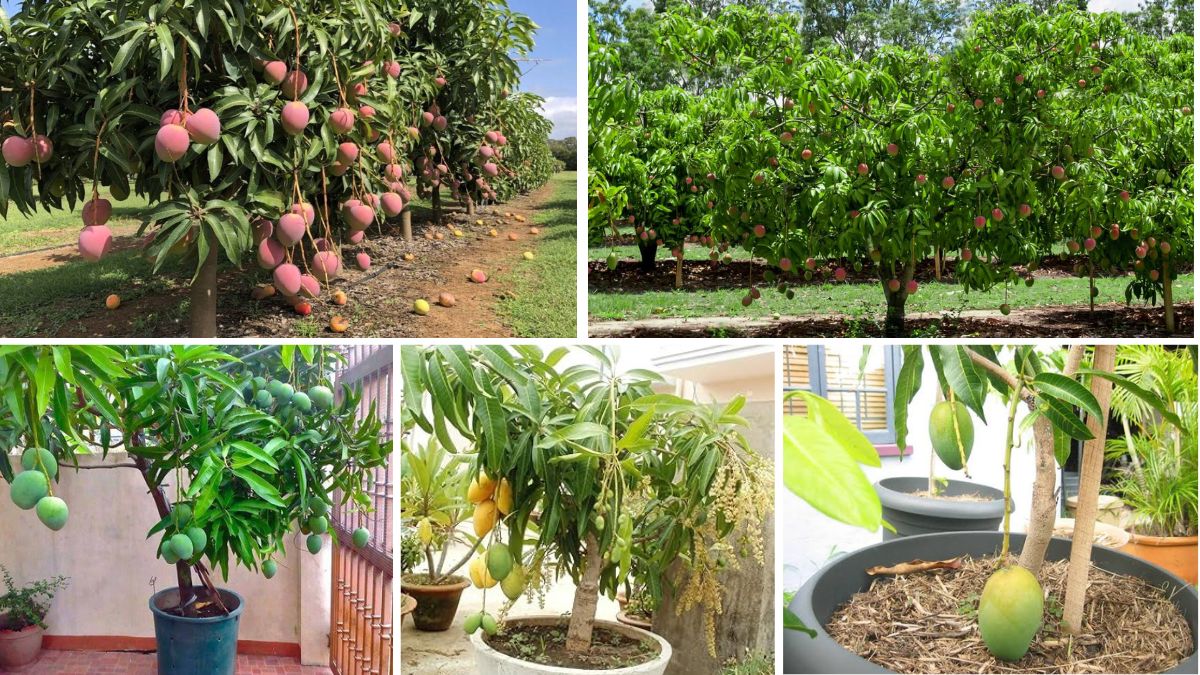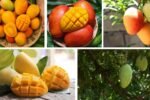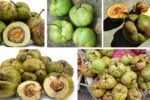Mangoes, often called the “king of fruits,” are beloved worldwide for their luscious flavor, nutritional value, and aromatic fragrance. While traditionally grown in open gardens or orchards, mango trees can also thrive in pots, making them perfect for small spaces, patios, and balconies. Growing mango trees in containers allows gardeners to enjoy fresh fruit, control soil conditions, and move plants as needed to optimize sunlight and protection. This guide provides a comprehensive step-by-step approach to successfully cultivate mango trees in pots, ensuring healthy growth, robust fruiting, and aesthetic appeal.
Introduction to Growing Mango Trees in Pots
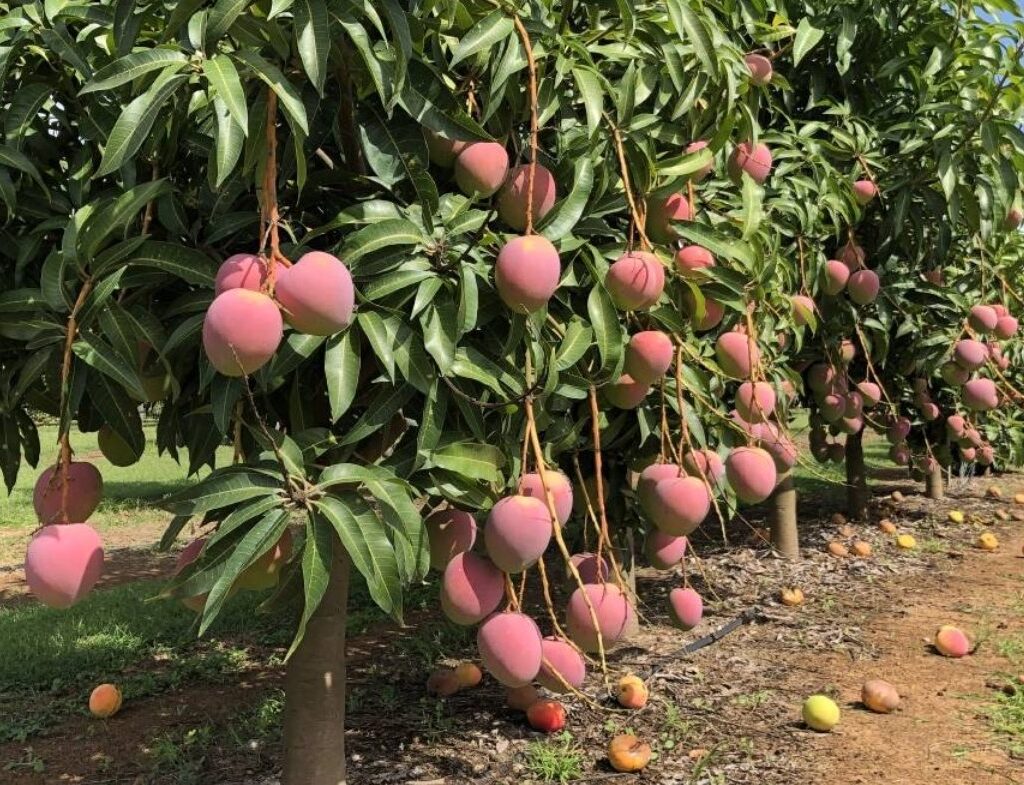
Container gardening offers flexibility for fruit cultivation in limited spaces. Mango trees, though naturally large, can adapt to pots with proper care, pruning, and attention to soil, water, and light. Potted mangoes also serve as decorative indoor or outdoor plants and can bear fruit if cared for properly.
Benefits of Growing Mango Trees in Pots:
- Ideal for small gardens, terraces, and balconies.
- Easier management of soil quality, watering, and nutrients.
- Mobility allows protection from extreme weather or pests.
- Offers the possibility of growing dwarf or semi-dwarf mango varieties.
1. Selecting the Right Mango Variety
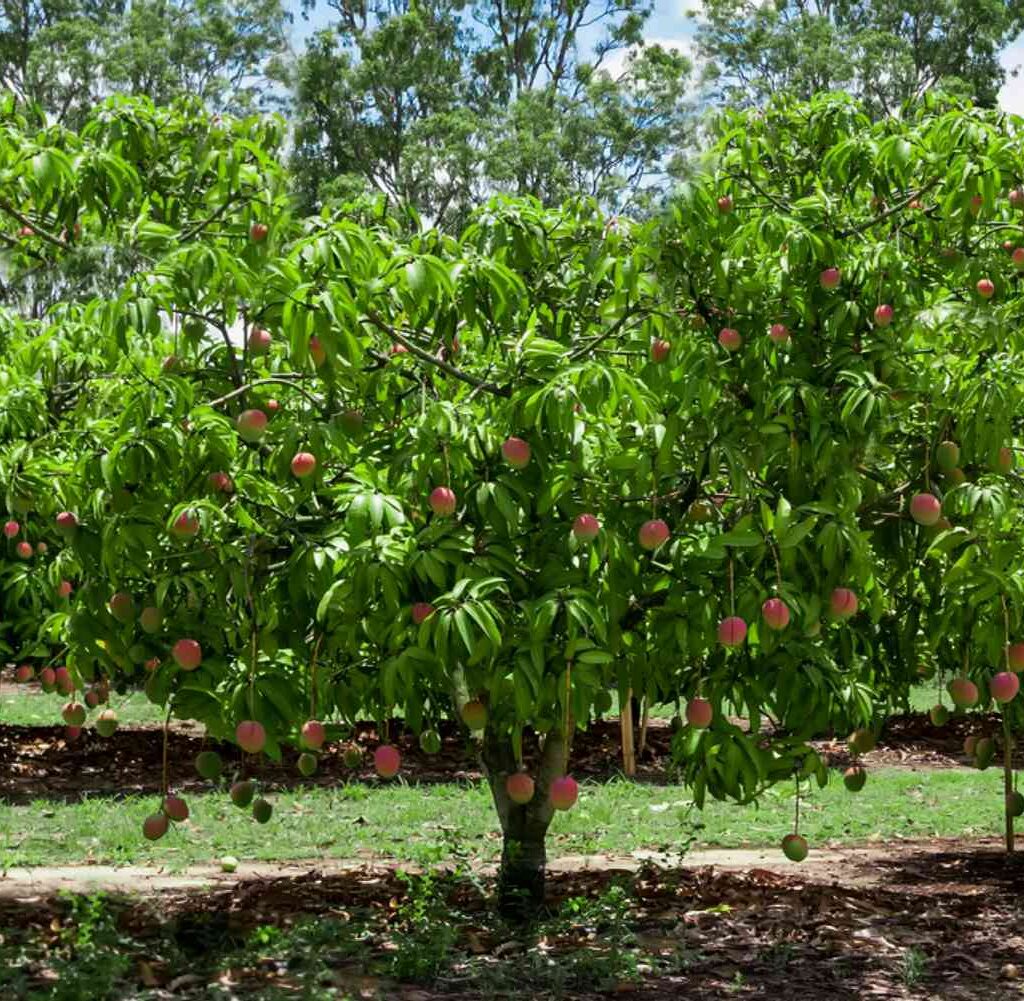
Choosing the appropriate mango variety is essential for container growth.
Recommended Varieties for Pots:
- Dwarf Alphonso: Compact size, fragrant, and sweet.
- Glenn Mango: Semi-dwarf variety, prolific fruiting.
- Carrie Mango: Small tree with high-quality fruits.
- Julie Mango: Compact and suitable for tropical climates.
Tips:
- Select dwarf or semi-dwarf varieties, as full-sized mangoes may outgrow containers.
- Purchase grafted seedlings from nurseries for faster fruiting and reliable fruit quality.
Importance: Proper variety selection ensures manageable tree size, higher yield, and long-term success.
2. Choosing the Right Pot
The container directly affects root growth, stability, and fruit production.
Pot Selection Tips:
- Use pots at least 18–24 inches in diameter and 18–20 inches deep.
- Choose containers with drainage holes to prevent waterlogging.
- Lightweight fiberglass, plastic, or ceramic pots are ideal for mobility.
- Ensure the pot is sturdy enough to support a growing tree.
Benefit: Proper container size ensures sufficient space for roots, promotes healthy growth, and prevents root-bound conditions.
3. Preparing the Soil Mix

Mango trees thrive in well-draining, nutrient-rich soil.
Recommended Soil Mix:
- 2 parts garden soil or loam.
- 1 part compost or organic manure.
- 1 part sand or perlite for drainage.
Tips:
- Avoid heavy clay soils that retain water and cause root rot.
- Incorporate slow-release fertilizers for continuous nutrient supply.
- Maintain slightly acidic to neutral pH (6.0–7.0) for optimal growth.
Importance: A balanced soil mix supports root development, moisture retention, and nutrient availability.
4. Planting Mango Seeds or Saplings
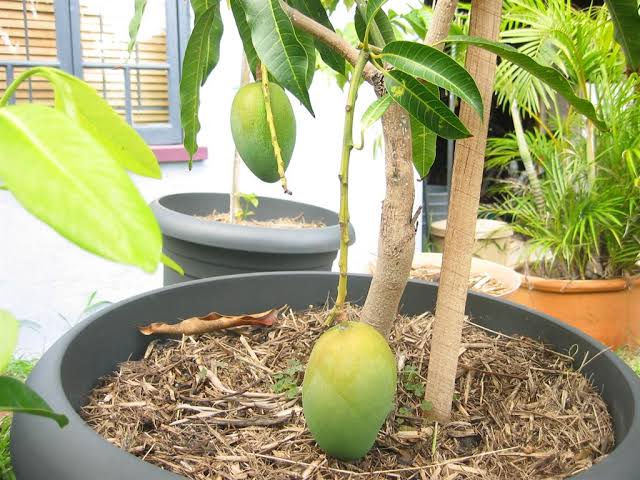
Mango trees can be grown from seeds or grafted saplings.
Planting Steps for Saplings:
- Fill the pot with prepared soil, leaving 2–3 inches at the top.
- Dig a hole slightly larger than the root ball.
- Place the sapling carefully, ensuring the graft union (if present) is above soil level.
- Backfill with soil, gently firming it around the roots.
- Water thoroughly to settle the soil.
Tips:
- Seeds from mature mangoes can be planted, but grafted saplings fruit faster.
- Avoid deep planting, which may hinder growth.
Benefit: Proper planting ensures strong establishment and healthy root systems.
5. Watering Schedule for Mango Trees in Pots
Watering is crucial for potted mango trees, as containers dry out faster than open soil.
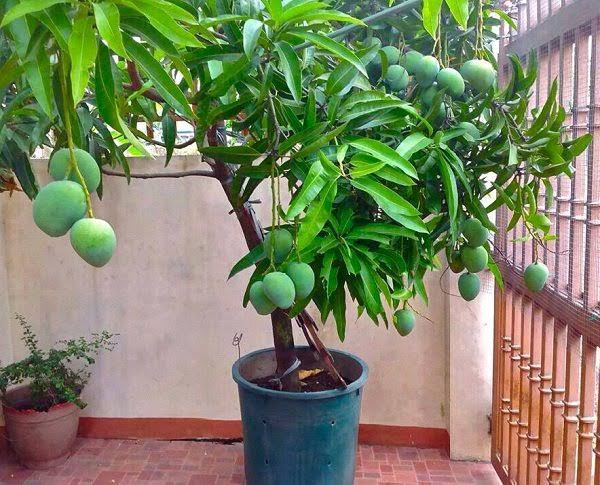
Tips:
- Water young trees 2–3 times per week, keeping the soil moist but not waterlogged.
- Reduce watering as the tree matures, allowing soil to dry slightly between waterings.
- Avoid overwatering, which can cause root rot and fungal infections.
- Use lukewarm water to prevent shock.
Importance: Balanced watering supports strong roots, vigorous growth, and fruit production.
6. Providing Adequate Sunlight
Mango trees require ample sunlight for photosynthesis and fruiting.
Tips:
- Place the pot in a location receiving at least 6–8 hours of direct sunlight daily.
- Rotate the pot periodically for even light exposure.
- In areas with intense midday sun, provide partial shade to prevent leaf burn.
Benefit: Adequate sunlight ensures lush foliage, healthy flowering, and high-quality fruits.
7. Fertilizing Mango Trees in Pots
Potted mango trees need regular fertilization due to limited soil nutrients.
Fertilization Tips:
- Use a balanced fertilizer (NPK 10:10:10) every 6–8 weeks during the growing season.
- Incorporate organic fertilizers such as compost, cow dung, or worm castings.
- Reduce nitrogen in the flowering stage to encourage fruiting.
- Apply micronutrients like zinc, iron, and magnesium for overall health.
Importance: Proper fertilization supports strong growth, flowering, and fruit development.
8. Pruning and Shaping Mango Trees
Pruning helps manage tree size, encourages branching, and enhances fruit yield.
Pruning Tips:
- Remove dead, diseased, or weak branches regularly.
- Pinch the tips of young saplings to promote bushier growth.
- Maintain a central leader or open vase shape for better sunlight penetration.
- Limit pruning during flowering to avoid reducing fruit yield.
Benefit: Proper pruning maintains tree health, improves air circulation, and encourages fruiting.
9. Pollination and Flowering
Mango trees may self-pollinate, but cross-pollination improves fruit set.
Tips:
- Plant multiple mango varieties nearby if space allows.
- Encourage pollinators like bees by adding flowering companion plants.
- Gently shake branches or use a small brush to assist pollination indoors.
Importance: Effective pollination ensures maximum fruit production and quality.
10. Pest and Disease Management
Potted mango trees are susceptible to pests and diseases if not monitored.
Common Pests:
- Aphids, mealybugs, scales, and spider mites.
Common Diseases:
- Powdery mildew, anthracnose, and root rot.
Management Tips:
- Inspect leaves and stems regularly.
- Apply neem oil or organic insecticides for pest control.
- Ensure good air circulation to prevent fungal infections.
- Avoid excessive moisture around the base.
Benefit: Regular monitoring and prompt action prevent damage and ensure healthy fruiting.
11. Winter Care for Potted Mango Trees
Mango trees are tropical and sensitive to cold.
Tips:
- Move pots indoors or to sheltered areas when temperatures drop below 50°F (10°C).
- Reduce watering and fertilization during the dormant winter period.
- Cover plants with frost cloth if necessary.
Importance: Proper winter care protects the tree from stress and promotes survival in non-tropical regions.
12. Harvesting Mangoes from Pots
Patience is required, as potted mango trees may take 3–5 years to bear fruit, depending on variety and growing conditions.
Harvesting Tips:
- Observe color changes and aroma to determine ripeness.
- Avoid pulling fruits forcefully; twist gently to harvest.
- Leave fruits at room temperature to ripen fully after picking.
Benefit: Harvesting at the right time ensures optimal flavor, sweetness, and nutrient retention.
13. Propagating Mango Trees in Pots
Propagation allows gardeners to expand their collection or share trees.
Propagation Methods:
- Grafting: Produces true-to-type plants with faster fruiting.
- Seed Propagation: Simple but slower to bear fruit.
- Air Layering: Effective for dwarf varieties to maintain size.
Tips:
- Use healthy parent trees for cuttings or grafts.
- Maintain consistent moisture and light during propagation.
Importance: Propagation ensures continuity and allows experimentation with different mango varieties.
14. Troubleshooting Common Problems
Even with proper care, potted mango trees may encounter growth challenges.
Common Issues & Solutions:
- Yellow Leaves: Overwatering, nutrient deficiency, or pest infestation.
- Poor Flowering: Insufficient sunlight, improper pruning, or high nitrogen.
- Root Rot: Improve drainage and reduce watering.
- Leggy Growth: Increase sunlight exposure and prune to encourage bushy structure.
Tip: Early intervention prevents long-term damage and supports healthy development.
15. Decorative and Aesthetic Tips
Potted mango trees add beauty and greenery to indoor and outdoor spaces.
Ideas:
- Use colorful or ornamental pots to enhance aesthetic appeal.
- Combine with flowering plants for a tropical container garden.
- Place on patios, balconies, or sunrooms for visual interest.
- Ensure pots have drainage trays to prevent water damage indoors.
Benefit: Decorative potted mango trees improve ambiance, air quality, and overall appeal.
Conclusion
Growing mango trees in pots is a rewarding and flexible way to enjoy fresh fruits, beautiful foliage, and tropical ambiance, even in limited spaces. By selecting the right variety, using appropriate pots, maintaining soil health, providing sufficient water and sunlight, and applying proper pruning and fertilization practices, gardeners can successfully cultivate healthy mango trees.
